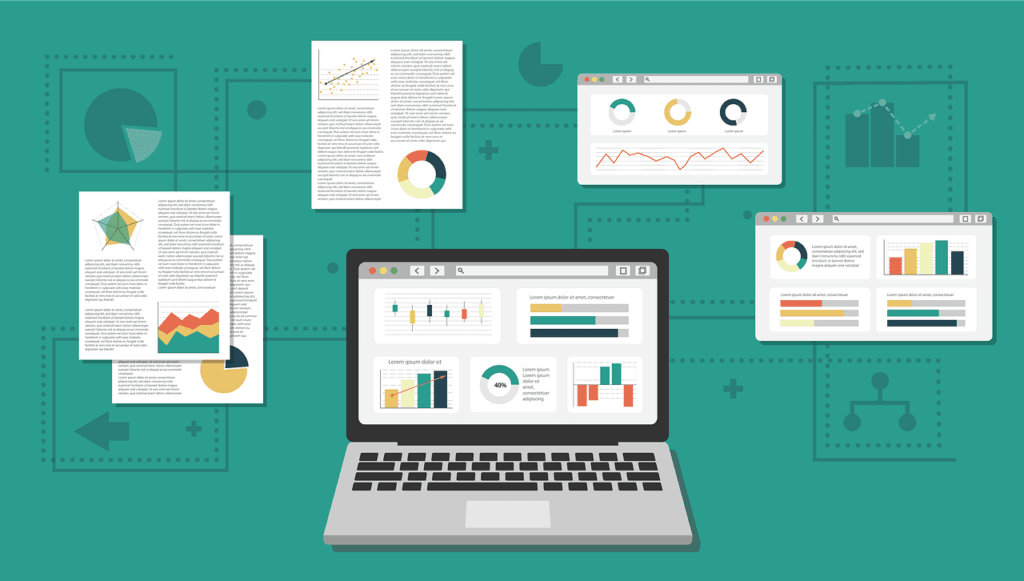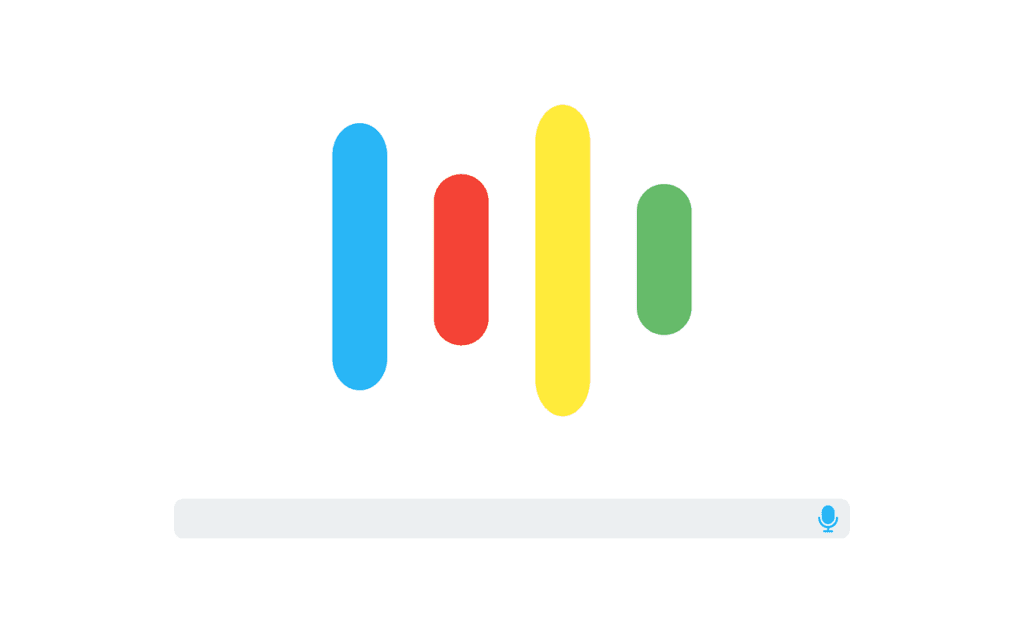This Article has been revised, edited and added to, by Poulomi Chakraborty.
Travel is as old as time, but the reasons we travel and the ways we choose our destinations have evolved, particularly in the age of data. One factor that remains consistent in influencing travel decisions is seasonality. Traditionally, peak tourist seasons were based on factors such as climate, school holidays, or cultural festivals. However, in the digital age, understanding the nuances of travel seasonality requires a closer look, particularly through the lens of analytics. Web analytics can shed light on patterns that aren’t immediately visible, helping travel businesses optimize offers, streamline operations, and enhance the traveler experience. Dive into the world of analytics with us to decode the rhythms of travel seasonality.
Grasping the Basics of Travel Seasonality

Before diving into analytics, one must understand the traditional drivers of seasonality in travel:
- Weather Patterns: Beach destinations might peak in summer, while winter might drive tourists to cozy mountain resorts or ski destinations.
- Cultural Events: Carnivals, festivals, and other cultural events can significantly impact inbound travel to a location.
- Economic Shifts: Currency fluctuations or regional economic trends might make certain destinations more affordable and appealing.
The Role of Consumer Behavior in Seasonal Trends
To truly grasp the basics of travel seasonality, it’s imperative to delve deeper into consumer behavior and its impact on travel choices. Understanding the psyche behind why people choose to travel during certain times of the year can offer invaluable insights for tailoring marketing strategies.
Startups should focus on gathering data on consumer preferences, booking habits, and travel motivations. This can be achieved through surveys, social media engagement, and analysis of online behavior patterns.
By comprehending the emotional and psychological triggers behind travel decisions, businesses can create more targeted and resonant marketing campaigns.
Leveraging Local Insights for Global Success
In addition to broad patterns, the nuances of local events, holidays, and even school calendars can significantly influence travel seasonality. Startups must go beyond global trends and harness local knowledge to uncover unique opportunities.
This means identifying local peak times that may not be evident on a global scale, such as regional festivals or national holidays. Engaging with local tourism boards, community groups, and leveraging social listening tools can provide a wealth of information that allows for the customization of offerings and marketing messages to capture the interest of travelers at the right time.
Predictive Analytics: Forecasting Future Trends
Another layer of understanding comes from predictive analytics, which uses historical data to forecast future trends. For travel startups, implementing predictive analytics can be a game-changer. It allows for anticipating shifts in travel patterns, identifying emerging trends before they become mainstream, and adjusting strategies accordingly.
Tools and technologies like AI and machine learning can analyze vast amounts of data to predict future travel hotspots, emerging preferences, and even potential downturns in certain destinations. By staying ahead of the curve, startups can position themselves as trendsetters and go-to sources for the next big travel experience.
Building a Seasonality-Responsive Business Model
Crafting a business model that is responsive to the ebbs and flows of travel seasonality is crucial. This involves creating flexible pricing strategies, dynamic packaging, and promotional offers that align with seasonal trends. Startups should consider adopting a more agile approach to marketing and operations, enabling quick adjustments based on analytics insights.
For instance, during expected low seasons, innovative engagement strategies such as off-peak discounts or special events can help maintain steady traffic and conversions. Similarly, preparing for peak times with optimized inventory, staffing, and customer service can ensure that the business capitalizes on high-demand periods.
Setting Up Your Analytics Tools

Before you can derive insights, ensure that your analytics tools are properly set up:
- Choose the Right Tool: Google Analytics is a popular choice, but platforms like Adobe Analytics or Mixpanel might offer features specific to your needs.
- Segmentation: Set up segments for different types of travelers – business, leisure, family, solo, etc.
- Conversion Tracking: Ensure you’re tracking crucial metrics, like booking completions, inquiry forms, or newsletter sign-ups.
Integrating Diverse Data Sources
In the quest to set up your analytics tools more effectively, it’s crucial to recognize the value of integrating diverse data sources. Beyond the basic metrics tracked by standard analytics platforms, startups should look to amalgamate data from various touchpoints.
This includes customer relationship management (CRM) systems, social media interactions, and even offline customer feedback. The integration of these data sources provides a more holistic view of the customer journey, enabling travel businesses to tailor their offerings and marketing strategies with greater precision.
Leveraging tools that facilitate the merging of online and offline data can uncover hidden patterns in customer behavior and preferences, leading to more informed decision-making.
Customizing Metrics to Your Business Goals
While generic metrics provide a broad overview of performance, customizing these metrics to align with specific business goals can significantly enhance the strategic value of your analytics. Start with defining clear, measurable objectives for your travel startup, whether it’s increasing direct bookings, enhancing customer satisfaction, or boosting off-peak season sales.
Once your goals are set, tailor your analytics to track metrics directly related to these objectives. For example, if increasing customer loyalty is a goal, focus on measuring repeat booking rates and customer lifetime value. Custom metrics might require more sophisticated analytics setups, but the insights gained are invaluable for strategic planning and execution.
Advanced Analytical Techniques for Deeper Insights
To truly leverage analytics for understanding travel seasonality, startups must not shy away from employing advanced analytical techniques. Predictive modeling, sentiment analysis, and cohort analysis are just a few methods that can provide deeper insights into travel patterns and customer behavior.
Predictive modeling can forecast future travel trends, enabling businesses to adjust their offerings proactively. Sentiment analysis of social media and review sites can provide real-time feedback on customer preferences and satisfaction levels.
Cohort analysis can track the behavior of specific groups over time, offering insights into the effectiveness of marketing campaigns and the lifetime value of customers acquired through different channels.
Embracing Real-Time Analytics for Immediate Action
In the dynamic world of travel, the ability to respond quickly to emerging trends and customer needs can be a significant competitive advantage. Real-time analytics allows businesses to monitor website traffic, conversion rates, and customer interactions as they happen.
This immediate insight enables swift decision-making, from adjusting marketing campaigns on the fly to addressing operational issues before they impact customer satisfaction. Investing in tools and platforms that offer real-time analytics capabilities ensures that your travel startup remains agile and responsive to the ever-changing travel landscape.
Identifying Patterns in User Traffic

With your analytics tool in place, begin by observing user traffic patterns:
- Monthly Trends: Look for spikes or drops in website traffic. Are there specific months when more users visit?
- Day of the Week: Is there a specific day when bookings are highest? This can provide insights into traveler behavior – perhaps most plan trips during the midweek.
- Hourly Patterns: Understanding which hours of the day see the most traffic can help in optimizing ad campaigns or customer support availability.
Leveraging Machine Learning for Predictive Analysis
In the realm of identifying patterns in user traffic, machine learning stands out as a pivotal tool for extrapolating future trends from historical data. By training algorithms on your accumulated user traffic data, startups can predict future behaviors with a remarkable degree of accuracy.
This predictive capability allows for the anticipation of traffic spikes or lulls, enabling proactive adjustments to marketing strategies and operational readiness. Machine learning can also identify subtle patterns that may not be visible through traditional analysis, such as predicting the impact of external factors like economic changes or global events on travel behavior.
Segmenting Traffic for Granular Insights
Delving deeper into user traffic patterns necessitates a sophisticated segmentation strategy. Beyond the basic demographics, consider segmenting users based on their interaction patterns, preferences, and even psychographics.
Advanced segmentation can reveal nuanced behaviors within your traffic, such as identifying high-value customer segments that may require personalized marketing approaches or recognizing patterns in booking abandonment that can lead to targeted optimizations.
The goal is to move beyond one-size-fits-all strategies and tailor your approach to meet the specific needs and behaviors of different user groups.
Cross-Channel Attribution Modeling
Understanding the multifaceted journey of a traveler from initial interest to booking confirmation requires a comprehensive view of all channels contributing to user traffic. Cross-channel attribution modeling is a technique that assigns value to each touchpoint a customer interacts with across different media before converting.
By implementing an attribution model that accurately reflects the customer journey, startups can gain insights into which channels are most effective at driving traffic and conversions at different times of the year.
This knowledge allows for the optimization of marketing spend across channels, ensuring resources are allocated to the most impactful touchpoints.
Analyzing Sentiment and Engagement Trends
User traffic data alone offers a quantitative view of how users interact with your platform, but combining this with sentiment analysis can provide a richer, more qualitative understanding of user behavior.
Analyzing user reviews, social media mentions, and feedback can uncover trends in sentiment that correlate with traffic patterns. For instance, an uptick in positive sentiment on social media may precede a spike in website traffic, offering an early indicator of increasing interest.
Additionally, monitoring engagement trends across your content can identify what resonates with your audience, guiding content strategy to align with user interests and seasonal preferences.
Utilizing Geo-Analysis for Localized Marketing Strategies
Incorporating geo-analysis into your traffic pattern identification efforts can unlock localized marketing opportunities. By understanding where your traffic is coming from, startups can tailor marketing messages and offers to specific geographic segments.
Geo-analysis can identify emerging markets or pinpoint regions with high interest but low conversion, indicating potential areas for localized engagement or operational adjustments. This approach not only enhances the relevance of your marketing efforts but also optimizes resource allocation to target high-opportunity regions effectively.
Source of Traffic and Its Seasonality

Not all travelers come from the same source, and understanding this can offer a wealth of insights:
- Organic Search: Monitor which keywords are driving traffic to your website. Are certain terms more popular during specific seasons?
- Referral Traffic: Identify which websites or platforms are referring traffic. A spike from a winter sports forum, for instance, can indicate the onset of the ski season.
- Social Media and Paid Campaigns: Observe the seasonality in traffic from social media platforms or paid ad campaigns. Aligning your marketing strategies with these patterns can boost ROI.
Diving Into Multi-Touch Attribution for Seasonal Campaigns
To gain a deeper understanding of how different traffic sources contribute to customer journeys, especially in the context of seasonal variability, multi-touch attribution becomes indispensable. This approach allows startups to recognize the value of each interaction a customer has with their brand across various platforms before making a booking.
By analyzing how this interaction pattern changes with the seasons, businesses can tailor their marketing efforts to ensure they are investing in the most effective channels at the right times. For example, social media might drive more awareness at the beginning of a season, while targeted email campaigns could be crucial for converting interest into bookings as the season progresses.
Exploiting Seasonal Trends in Search Behavior
Seasonal shifts in search behavior provide critical insights into how and when potential customers are planning their travels. By closely monitoring changes in search query volumes, startups can anticipate demand for specific destinations, types of travel, and travel times.
This information, coupled with an analysis of the competitive landscape for these queries, can guide SEO and content strategies to capture interest at its inception. Tailoring content and keywords to match these seasonal search trends ensures that your travel offerings are visible to potential customers exactly when they are most receptive.
Leveraging Social Listening for Real-Time Market Sensing
Social listening tools offer a real-time window into the preferences, interests, and discussions of travelers. By analyzing conversations across social media platforms, forums, and blogs, startups can gather insights into emerging travel trends, destination popularity, and customer sentiment towards travel experiences.
This real-time market sensing capability allows for rapid adjustments to marketing strategies and product offerings in response to shifting consumer interests. Additionally, identifying influential voices and trends within these conversations can guide targeted influencer partnerships and content creation efforts.
Geographic and Demographic Insights for Tailored Marketing
Understanding the geographic and demographic breakdown of your traffic sources can significantly enhance the effectiveness of your marketing campaigns. Geographic insights allow for the localization of marketing efforts, ensuring that messages resonate with the cultural and seasonal contexts of different regions. Demographic insights, on the other hand, enable the personalization of marketing messages to align with the preferences and behaviors of specific customer segments. This tailored approach not only improves engagement rates but also increases the efficiency of marketing spend by targeting resources towards the most responsive audiences.
Optimizing for Mobile Traffic Across Seasons
With the increasing predominance of mobile devices in online travel research and booking, optimizing for mobile traffic becomes a critical consideration. Mobile usage patterns can exhibit significant seasonality, influenced by factors such as holiday travel periods and summer vacations.
Ensuring that mobile users have a seamless experience, from discovery through booking, is essential for capturing this traffic. This means prioritizing mobile-responsive design, fast page loading times, and streamlined booking processes.
Additionally, mobile-specific marketing strategies, such as app-based promotions or SMS marketing, can be particularly effective in engaging travelers on the go.

Related: Check out our free SEO suite

Delving Deep with User Demographics
Understanding WHO is traveling can be as crucial as knowing WHEN:
- Age Groups: Perhaps younger travelers prefer spring breaks, while older tourists favor the fall season.
- Location: Analyzing the geographic origin of your website visitors can offer insights. For instance, tourists from colder regions might prefer tropical destinations during their winter months.
- Device Usage: Are travelers using mobile devices more during certain seasons? This can influence your website’s mobile optimization strategies.
Crafting Personas for Precision Marketing
The creation of detailed customer personas based on user demographics offers a strategic tool for honing marketing efforts with precision. By delving into the analytics to understand not just the age, location, and device preferences of your users, but also their motivations, preferences, and behaviors, startups can craft nuanced personas that represent their ideal customer segments. These personas can guide content creation, marketing messaging, and even product development, ensuring that every aspect of the business is aligned with the needs and desires of its most valuable customers. For instance, developing personas for eco-conscious travelers, luxury seekers, or adventure enthusiasts allows for targeted campaigns that resonate deeply with each group’s unique interests and values.
Integrating Behavioral Data for Comprehensive Profiles
To enrich the understanding of user demographics, integrating behavioral data into demographic profiles transforms broad segments into dynamic, actionable customer models. This involves analyzing how different demographic groups interact with your website and services, from the pages they visit most frequently to the types of offers that convert them into bookings. By marrying demographic data with user behavior, startups can identify patterns and preferences that are not immediately apparent, allowing for the customization of user experiences. For example, if data shows that younger travelers are more likely to book through mobile devices, then optimizing mobile user experience becomes a priority.
Leveraging Demographics for Content Personalization

One of the most powerful applications of demographic analysis is the personalization of content across all touchpoints. Startups should leverage their understanding of user demographics to tailor content on their websites, in email marketing, and on social platforms to meet the specific interests and needs of different segments.
Personalization can range from recommending destinations based on the user’s location to customizing email content based on past booking history or expressed interests. This approach not only improves user engagement but also enhances the effectiveness of marketing efforts by delivering relevant, valuable content that users are more likely to act on.
Utilizing Demographic Insights for Seasonal Adjustments
Seasonal marketing strategies can benefit greatly from insights drawn from user demographics. By analyzing demographic data in relation to seasonal booking trends, startups can identify which segments are most active during different times of the year and adjust their marketing strategies accordingly.
This might involve focusing on families during school holiday periods or targeting solo travelers with off-peak travel deals. The key is to use demographic insights to anticipate the needs of different segments throughout the year and tailor marketing efforts to match these seasonal preferences.
Analyzing On-site User Behavior’s
Once you’ve got a grip on traffic sources and demographics, the next step is understanding what these visitors do on your website.
- Bounce Rates: Monitor bounce rates seasonally. High bounce rates during peak seasons could indicate that the content isn’t matching the user’s expectations or technical issues with your website.
- Page Views: Which pages are most visited during certain seasons? This can guide content creation – perhaps it’s time to create a detailed guide about that trending summer destination.
- Booking Abandonment: Are there more incomplete bookings during certain periods? This could highlight issues with your booking system or pricing concerns during peak seasons.
Implementing Heat Maps for Visual Engagement Insights
Heat maps provide a visual representation of how users interact with your website, offering a deeper understanding of their behaviors beyond traditional analytics metrics. By analyzing areas of high and low engagement on your site, startups can identify which elements capture attention and which are overlooked.
This insight is invaluable for optimizing the layout, design, and content placement to enhance user experience and guide visitors towards desired actions, such as making a booking or signing up for newsletters. For example, if heat maps reveal that users frequently ignore your call-to-action buttons, you may need to reconsider their placement or design.
Conducting A/B Testing to Refine User Experience
A/B testing is a critical tool for understanding on-site user behaviors and preferences. By presenting two versions of a webpage to users and analyzing their interactions with each, startups can empirically determine which elements lead to higher engagement and conversion rates.
This method can be applied to test different headlines, page layouts, images, or call-to-action buttons, providing data-backed insights that guide website optimization. Regularly implementing A/B testing ensures your website remains aligned with user preferences and market trends, ultimately enhancing the user journey and boosting conversion rates.
Utilizing Session Replays for Direct Insight into User Journeys
Session replays offer a window into the actual experiences of users on your website, allowing you to watch real browsing sessions as if you were looking over the user’s shoulder. This tool can uncover specific issues and obstacles that users face, such as confusing navigation or problematic forms.
By identifying and addressing these issues, startups can significantly improve the user experience, reducing frustration and abandonment rates. Session replays can also highlight unexpected paths users take, offering insights into how website design influences user behavior and decision-making processes.
Leveraging User Feedback for Continuous Improvement
While analyzing user behavior through data is powerful, directly soliciting user feedback adds another dimension to understanding on-site experiences. Implementing tools for collecting user feedback, such as surveys or feedback buttons, provides qualitative insights that complement quantitative data.
This feedback can reveal gaps in content, usability issues, or new features that users desire, offering a direct line to customer needs and preferences. Actively engaging with this feedback and incorporating it into website development ensures that the platform evolves in alignment with user expectations, fostering loyalty and satisfaction.
Synthesizing Behavioral Data for Strategic Decisions
The culmination of on-site user behavior analysis is the synthesis of these diverse data sources into actionable strategic decisions. By integrating insights from heat maps, A/B testing, session replays, and user feedback, startups can develop a comprehensive understanding of how users interact with their platform.
This holistic view enables the identification of overarching patterns and trends, guiding not just website optimization but also informing broader business strategies, such as product development, marketing focus, and customer service enhancements.
Interpreting Conversion Data

Conversions, be it inquiries or actual bookings, are the lifeblood of any travel business. Using analytics to understand their seasonality is paramount.
- Conversion Rates: While high traffic is great, it’s conversions that truly matter. Identify which seasons drive the highest conversion rates and strategize accordingly.
- Average Booking Value: Are travelers splurging more during particular months? This could shape your upselling or package strategies.
- Return on Ad Spend (ROAS): If you’re investing in paid advertising, monitor ROAS seasonally. This can guide future ad spends and campaign strategies.
Understanding the Nuances of Conversion Paths
The journey a customer takes from initial interest to final conversion is rarely straightforward. By analyzing the paths users take, startups can uncover the nuances of these journeys, identifying common patterns and potential bottlenecks.
This deeper understanding enables businesses to streamline the conversion process, removing obstacles and enhancing touchpoints that contribute to higher conversion rates. For example, if analytics reveal that users often visit FAQs or review pages before booking, enhancing these pages with more persuasive content or clearer information could directly boost conversions.
Segmenting Conversions for Strategic Insights
Segmentation plays a crucial role in interpreting conversion data effectively. By dividing conversions into segments based on criteria such as customer demographics, source of traffic, or type of travel booked, startups can identify which segments are most valuable or offer the most growth potential.
This targeted analysis allows businesses to allocate resources more efficiently, focusing on optimizing conversion rates for segments with the highest ROI. Additionally, understanding the differences in conversion behavior among segments can guide personalized marketing strategies, further improving conversion rates.
Leveraging Post-Conversion Data for Retention Strategies
The value of conversion data extends beyond the initial booking. Analyzing post-conversion behavior, such as repeat booking rates, reviews left, or engagement with post-booking communications, can offer insights into customer satisfaction and loyalty.
This information is critical for developing retention strategies that encourage repeat business and word-of-mouth referrals, two key drivers of long-term success in the travel industry. For instance, if data shows that customers who engage with post-booking emails are more likely to book again, enhancing email communication becomes a strategic priority.
Integrating Conversion Data with Financial Metrics
To truly grasp the impact of conversion data, it’s essential to integrate it with key financial metrics such as revenue per user, cost of acquisition, and overall profitability. This integration allows startups to assess not just the quantity of conversions, but their quality and financial impact.
By analyzing which types of conversions are most profitable and which marketing channels offer the best ROI, businesses can refine their strategies to maximize profitability. This financial lens on conversion data ensures that efforts to improve conversion rates are always aligned with the broader goal of financial health and growth.
Utilizing Conversion Data for Competitive Analysis
Finally, conversion data can provide valuable insights when used in competitive analysis. By benchmarking your conversion rates and related metrics against industry averages or direct competitors, startups can identify areas where they excel and areas needing improvement.
This comparison can inspire strategies to enhance competitive advantages or address weaknesses. Furthermore, monitoring changes in these benchmarks over time can alert businesses to shifting market dynamics or emerging competitive threats, enabling proactive adjustments to maintain a competitive edge.
Conclusion
Harnessing analytics to decode travel seasonality is akin to piecing together a vast and intricate puzzle. Each data point, be it from organic search, social media, or offline sources, adds to the larger picture. As travel businesses strive to offer memorable experiences, a deep understanding of seasonality, powered by analytics, can be the differentiator. It’s not just about knowing when travelers move but understanding the why behind it, ensuring every journey curated resonates with the heartbeats of seasonality.
Read Next
- Mastering Sales Intelligence: Strategies for Smarter Selling
- Unlocking the Power of Sales Acceleration: Strategies for Rapid Growth
- Original Equipment Manufacturing Agreements: All You Need to Know
- SaaS Agreements Explained: Tips for Successful Software as a Service Contracts
- Demystifying End-User License Agreements (EULA): What You Need to Know





















